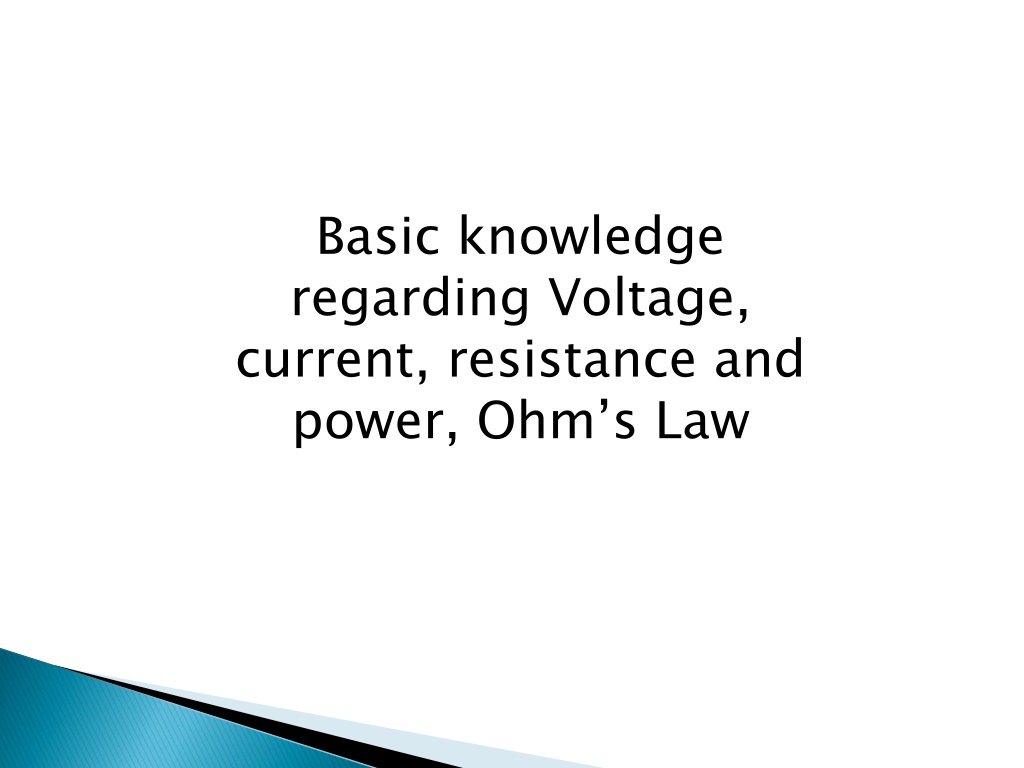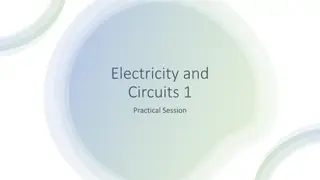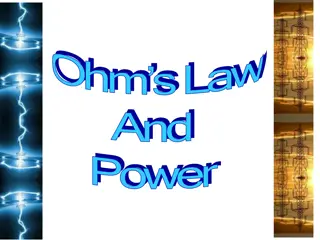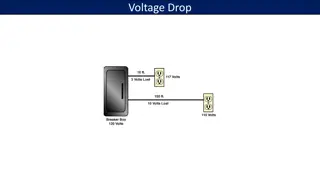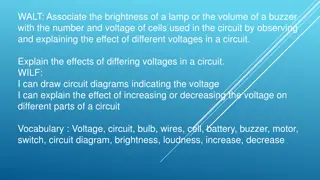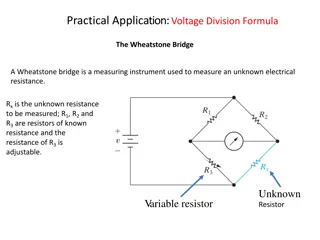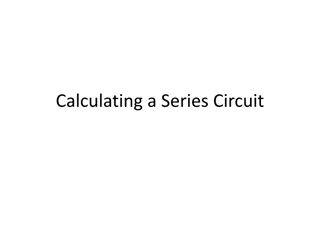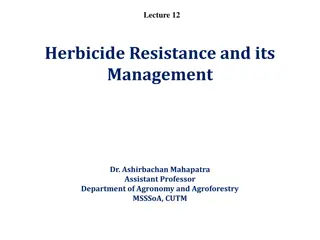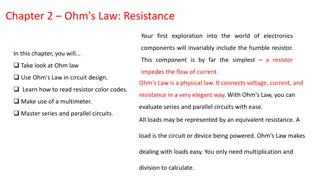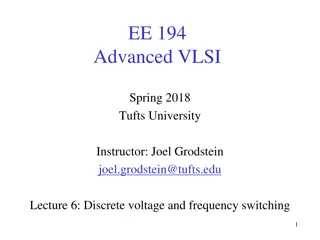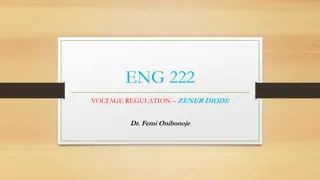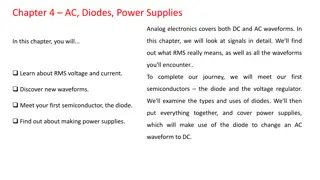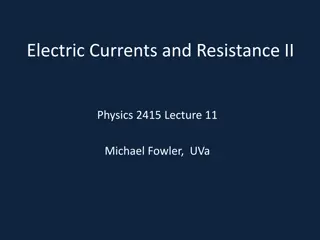Understanding Voltage, Current, Resistance, and Ohm's Law
Learn the fundamentals of voltage, current, resistance, and power, along with insights into Ohm’s Law. Discover how these concepts are interconnected and essential for understanding electrical circuits. Explore the unit of voltage, the movement of electrical current, the concept of resistance, and the significance of Ohm's Law in calculating relationships between voltage, current, and resistance.
Download Presentation

Please find below an Image/Link to download the presentation.
The content on the website is provided AS IS for your information and personal use only. It may not be sold, licensed, or shared on other websites without obtaining consent from the author. Download presentation by click this link. If you encounter any issues during the download, it is possible that the publisher has removed the file from their server.
E N D
Presentation Transcript
Basic knowledge regarding Voltage, current, resistance and power, Ohm s Law
The unit of voltage is the volt (V) One volt is the potential difference (voltage) between two points when one joule of energy is used to move one coulomb of charge from one point to the other V=W/Q Example: How much energy is used to move 50 C from one point in a circuit to another when the voltage between the two points is 12 V? W = Q V = 50 12 J = 600 J
The movement of free electrons from negative to positive is electrical current (I) electrical current is the rate of flow of charge I=Q/t
The property of a material that restricts the flow of electrons is called resistance (R) Where there is current through any material that has resistance, heat is produced by the collisions of electrons and atoms One ohm of resistance exists if there is one ampere of current in a material when one volt is applied across the material.
Ohm's Law is a formula used to calculate the relationship between voltage, current and resistance in an electrical circuit. To students of electronics, Ohm's Law (E = IR) is as fundamentally important as Einstein's Relativity equation (E = mc ) is to physicists. E = I x R.
